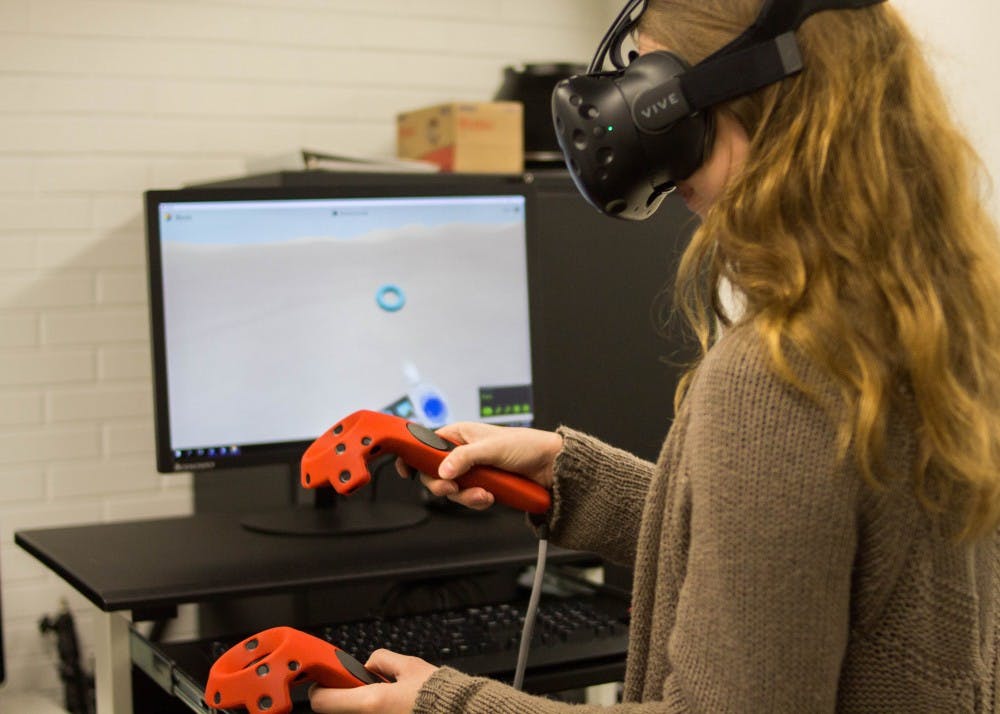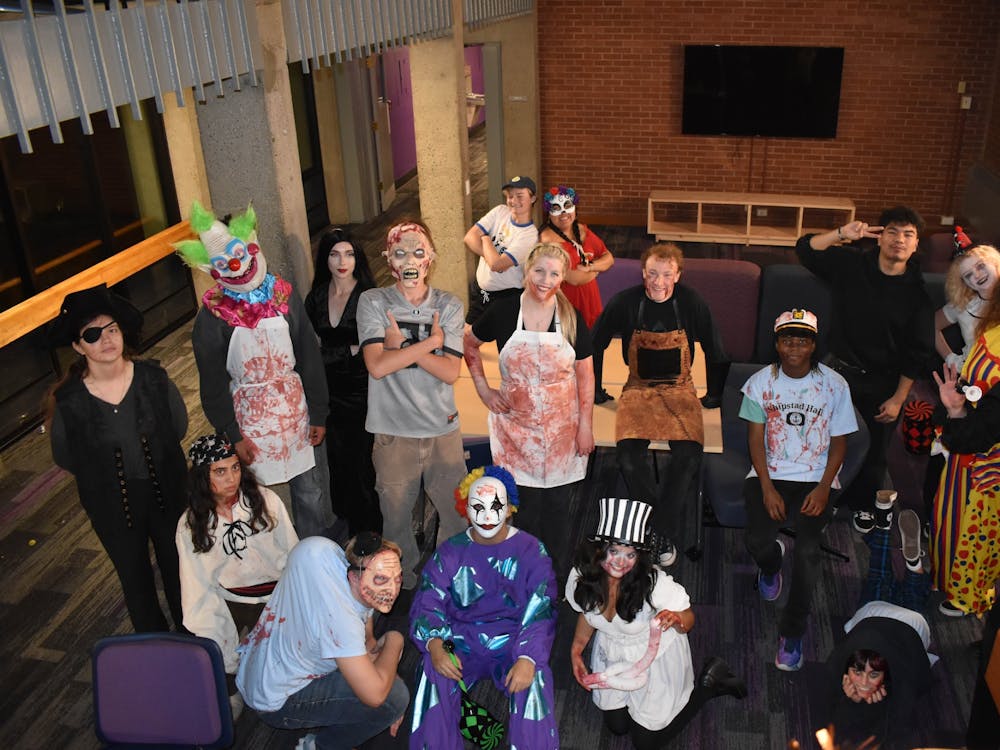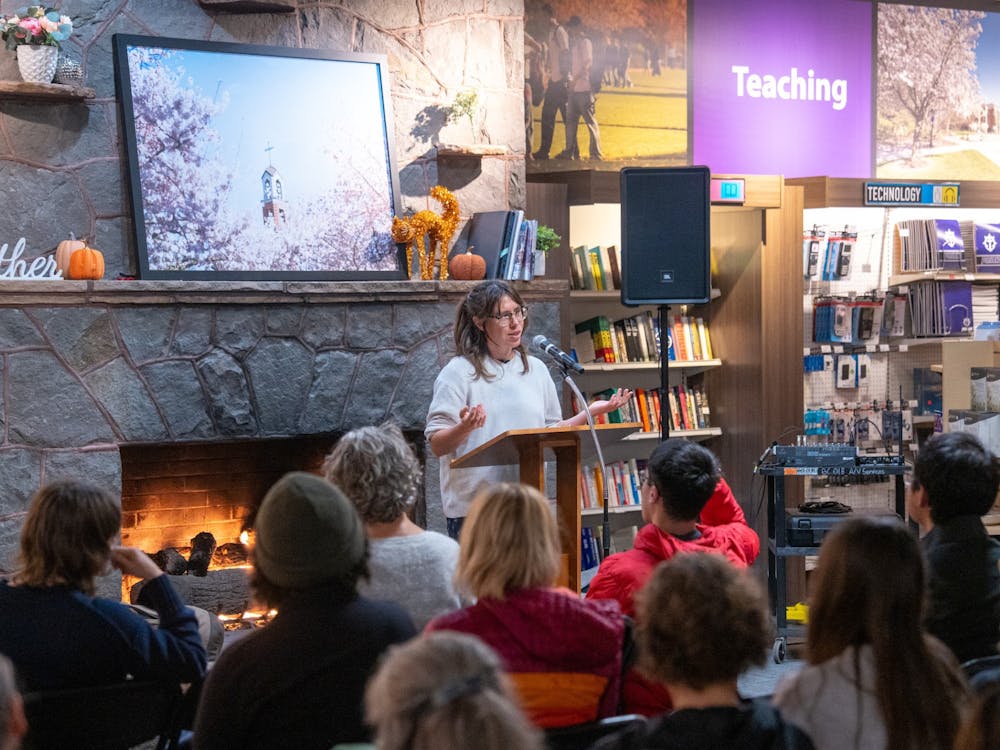You strap the goggle-like headset on and look down. Where your hands would be are now little blue and grey controllers, floating in space. You were standing in a library room, but now you’re surrounded by sand dunes.
You pull a trigger, and a donut-shaped block materializes before you, hovering in mid-air. You move your hand and another block stacks on top of the first. The blocks may not be real, but they sure look like they are.
Is it the future? No, it’s what students can experience today with the Clark Library’s new virtual reality technology. The new technology includes one HTC Vive headset, headphones and corresponding controllers. Students can try them out by reserving them via the Digital Lab’s website, or by walking into the Digital Lab and asking about virtual reality.
“At this point what we are doing is letting people explore,” said José Velazco, the
Clark Library’s digital lab coordinator. Velazco said that virtual reality will allow engineering students to make designs with a three-dimensional feel, but the technology can be applied to a variety of disciplines.
The range of abilities offered is based on the software you use. Google Blocks, for example, is a platform where users can make designs in the third-dimension, and digitally save or possibly 3D print them.
The program The Body VR: Journey Inside a Cell allows users to see the makings of human cells in real life, while the program Tilt Brush offers three-dimensional painting. Additionally, Google Earth allows users to explore new cities and geography.
If a software a student wants to use isn’t available though, the digital lab is willing to accommodate and potentially buy new programs.
“I’m constantly refining things in the facility, based upon patron interjection,” Velazco said. “We can collaborate with (students) to bring software and experiences on board that we currently don’t have.”
Freshmen engineering students Ian Legge and Ben Bishop used the virtual reality headset and controllers for the first time last week. When he learned about the new virtual reality option offered at the Digital Lab, Bishop became interested in making CAD designs — or computer-assisted designs — using the VR system.
“I don't really know a lot about (virtual reality),” Legge said. “This is the first time I’ve done this, so this is more me figuring out what’s going on and how it works.”
As for academic use, Bishop suggested that VR could be helpful in physics classes. Instead of having to visualize the third dimension on a two-dimensional whiteboard, students may be able to use virtual reality.
“I’d say for physics, if they could give you a model in virtual reality to look at,” Bishop said. “It would be way easier to understand some of the concepts.”
With the headset on, Legge surveyed the city of Paris in Google Earth while Bishop watched the computer monitor depicting the same scene. They looked at the Eiffel tower from different angles, and with the push of a button, Legge switched to street view. Through the headset, the city looked as real as if he were actually standing there.








